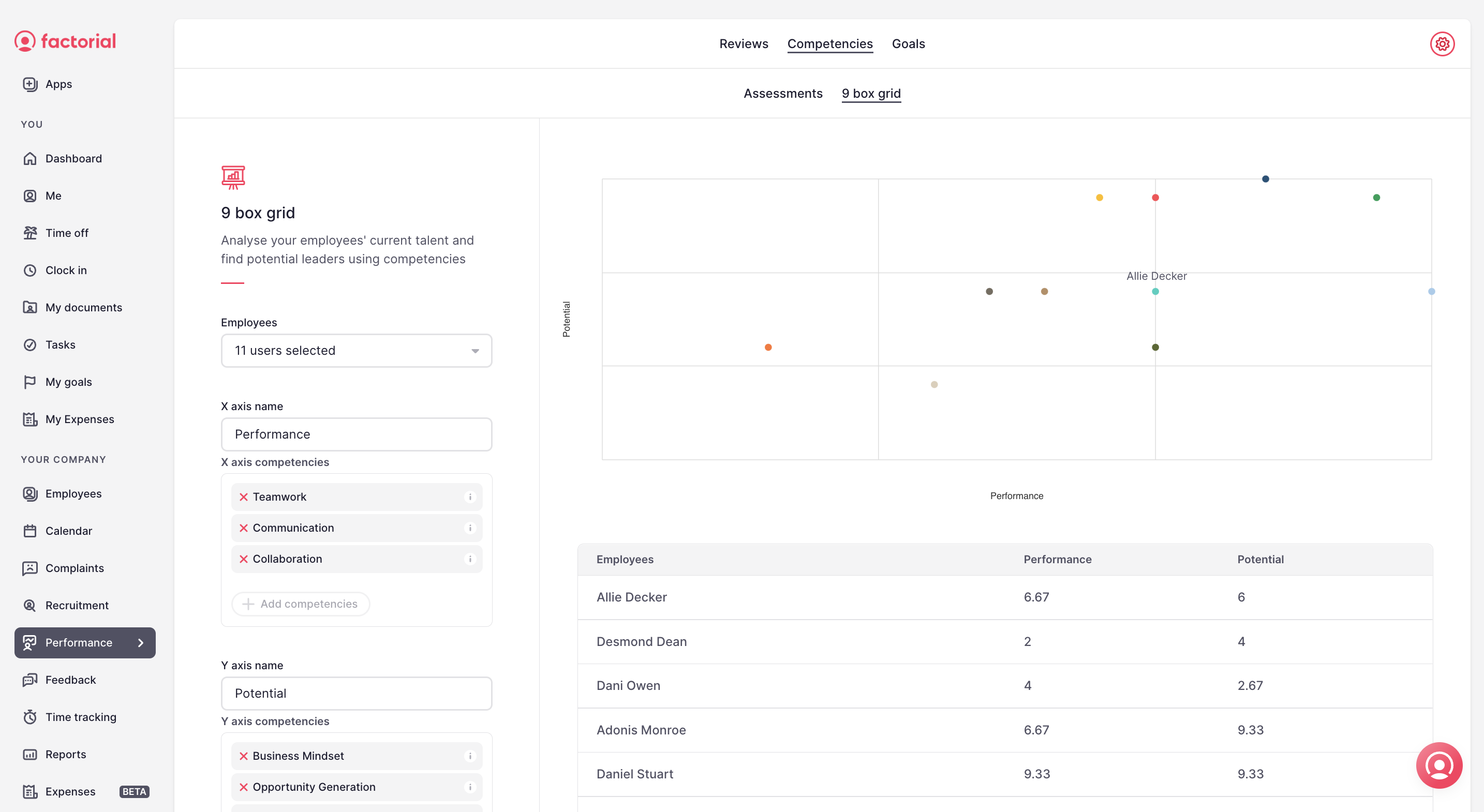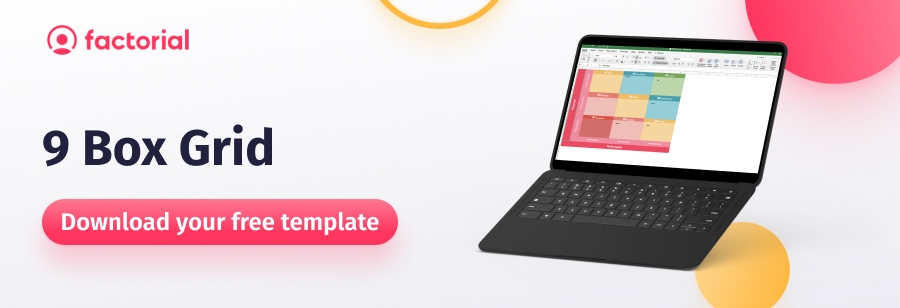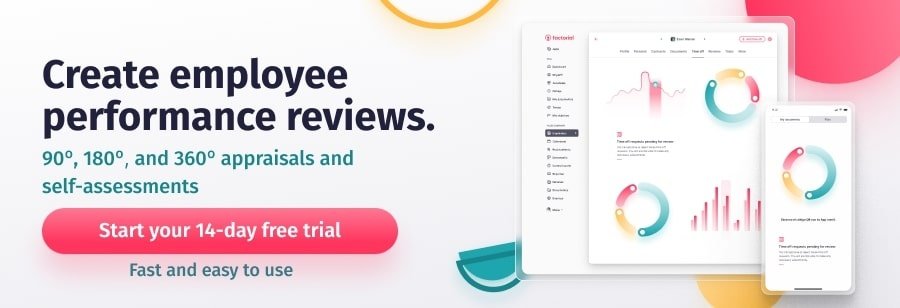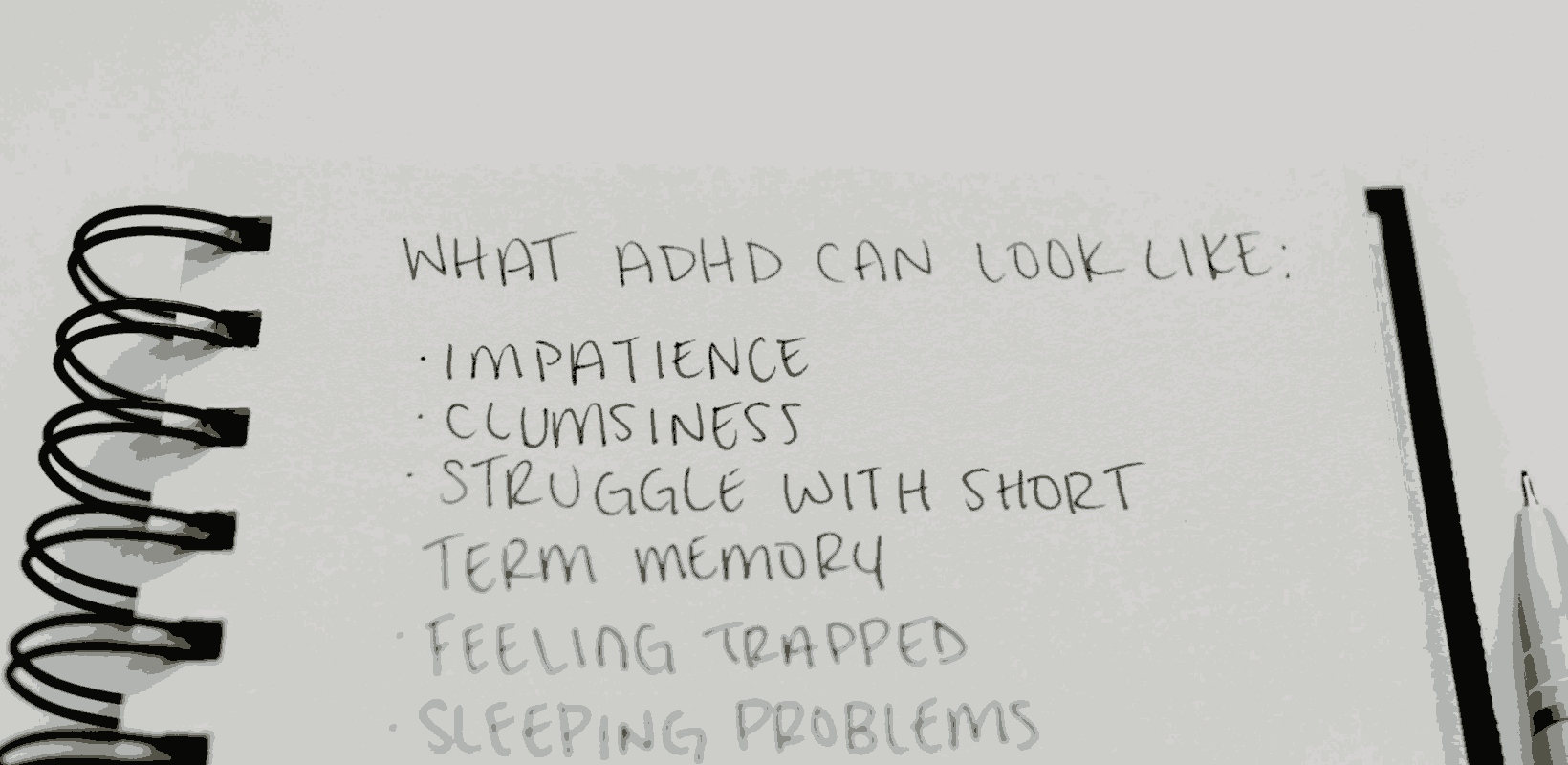With the rise of remote and hybrid work, the way companies measure employee performance has changed. According to Shoosmiths, this shift means they should build a performance management policy based on productivity and outcomes rather than employee behaviour as they would traditionally. As a result, talent management models like the 9 box grid are being used more often for talent mapping and measuring performance.
McKinsey developed the 9 box model in the 1970s to help General Electric prioritise investments across its 150 business units. It has evolved since then into an HR management tool used to measure two factors: performance and potential.
But what is it exactly?
In this guide, we will explain what the 9 box is and how it can be used as part of your performance management policy. We will also discuss the pros and cons of conducting a 9 box assessment to help you decide if it is the right tool for you. You can download our free 9 box grid template below to try it out yourself.
- What is a 9 Box Grid?
- How to Use 9 Box Grid
- Why Use a 9 Box Grid Model
- Limitations of the 9 Box Grid Model
- ✅ Centralise your Performance Management with Factorial’s Software
What is a 9 Box Grid?
The 9 box grid, also known as the 9-box assessment model, is a talent management model used to analyse and compare employee work performance and potential. It helps managers identify future leaders and those with potential. The 9-box can also be used to reevaluate talent placement, improve succession planning, and identify performance issues and talent gaps. It facilitates employee growth and contributes to retention, engagement, and productivity.
But how?
With the 9 box grid model, you map your employees against two axes: current performance and future potential. Where they fall on the grid will depend on their combined scores. The higher the score, the more potential for growth. This information can then be used to strategically develop employees for future positions within the company.
With these results you can determine:
- Which of your employees are ready to lead. You can then prepare them for promotion.
- If you have any employees who are not yet ready for a management role but could be in the future with the right career development.
- Which employees are falling short of expectations in their current role. You can then create a performance improvement plan and set clear objectives to help them get back on track.
How to Use 9 Box Grid
The 9 box grid is a simple three-by-three framework that you can incorporate into your performance management policy. You can use this framework to plot employees’ future potential on the y-axis (high potential, moderate potential, low potential) and their current performance on the x-axis (low performer, moderate performer, high performer) according to their combined performance scores. Where they fall on the grid determines their future within your organisation.
Evaluate Employee Performance
Before you use the grid, you need to assess employee performance. To do this, you can use a performance management tool, such as:
- KPIs
- performance appraisals
- salary reviews
- 360-degree feedback
- personal development plans
- reward and recognition programs.
Using a talent management software can bring these tools together in one place to help you accurately track and evaluate employee performance against established KPIs (more on this later).
Depending on the results obtained from the assessment tools, determine whether employees are high, moderate, or high performers. This three-point scale will appear as the x-axis of your nine-box.
Evaluate Employee Potential
The other axis on the nine-box is employee potential. Using performance appraisals, 360 reviews, or other talent management models previously mentioned, you can get an idea of the potential that employees have to grow in the company. This means taking into account motivation levels and desire to learn. Like performance, you will need to note whether employees have a high, moderate, or low amount of potential.
Position on the 9 Box Grid
After scoring employee performance and potential, it is time to put it all together in the 9 box matrix. You can draw out the 9-box by hand or, to make things easy, download our free 9 box grid template. As the name indicates, employees should fall into one of nine categories.
The 9 box grid template consists of the following categories:
- Enigma- Low performer with high potential
- High potential- Moderate performer with high potential
- Excellent- High performer with high potential
- Questionable- Low performer with moderate potential
- Reliable- Moderate performer with moderate potential
- High performer- High performer with moderate potential
- Unacceptable- Low performer with low potential
- Acceptable- Moderate performer with low potential
- Dedicated- High performer with low potential
Once you determine an employee’s position on the 9 box matrix, you have a frame of reference for deciding how their future at your company will look, and where you need to invest your efforts.
In general, this includes:
- Recognising high-performing employees.
- Supporting mid-range performers to help them improve their performance and move higher up the grid (the top right of the grid is the optimum spot).
- Identifying employees who consistently underperform and developing a performance improvement plan.
Why not give our handy downloadable “9 box grid template” a go to see what you think? Or download a free trial of Factorial and use our 9 box tool within the platform.

Benefits of the 9 Box Grid Model
Although there are a number of benefits to holding regular performance appraisals, using this performance management model can provide a deeper level of insight into the level of employee performance in your company.
Here are some of the pros:
- Many companies are now distancing themselves from traditional annual performance reviews as they are costly and do not offer a true representation of an employee’s performance. The 9 box matrix gives you a much more rounded and up-to-date perspective. This is because you can use it to evaluate both current performance and potential, so it gives you a much clearer picture of each employee’s performance. It also helps you deliver more relevant recognition and more appropriate support, which improves employee morale and job enrichment.
- The 9 box matrix is quick to set up and easy to use. You just have to review an employee’s strengths and weaknesses to match them with the right box. The visual nature of it also makes it much easier for you to see where you have gaps in your talent pool.
- It encourages dialogue, collaboration, and communication between managers.
- The framework makes it much easier for you to plan for business continuity and employee growth.
- As a talent management model, it can give you a fresh perspective on the level of performance in your company.
- It’s a valuable tool for your career development plans that can help take your business to the next level.
- It makes workforce planning easier. Plus, the 9 box grid highlights development opportunities or training needs, facilitates employee growth and contributes to retention, engagement, and productivity.
- Finally, it increases transparency. The 9 box matrix requires open and honest communication between managers. These conversations can often help clarify company goals and expectations.
Limitations of the 9 Box Grid Model
Every great performance management tool has its limitations, and the 9 box grid is no exception.
For example, here are some limitations to consider:
- It is a great tool for getting a broad overview of an employee. However, it doesn’t go into any details about an employee’s performance or potential. You also need to rely on additional assessment tools to get a complete perspective of an employee’s performance. This includes regular personal appraisals, 360 feedback, and performance development plans, amongst other tools.
- There are some concerns about how accurate and clear metrics are. This is because it is very difficult for your managers to objectively measure ‘potential’ as it is so clearly linked with ‘performance’. There is also a subjective element here, as one manager’s concept of high potential may differ greatly from the opinions of another. If you decide to use the 9 box assessment model, you need to make sure all managers are clear on how potential is defined and measured.
- The 9 box can also be susceptible to bias. This is because there is a danger that once a label of “high performer” or “low performer” has been assigned to an employee, it can be difficult to unstick. Without clear guidelines, these labels can affect the degree of support and recognition an employee receives.
Talent Management Software
The 9 box model is a great tool for getting an overview of an employee’s performance, but to get a better picture of employee performance you need a comprehensive performance management software.
But why is this so important?
A good employee performance management software helps you track and evaluate employee performance against established KPIs and provides employees with relevant training and professional guidance. Talent management software usually include features for tracking and monitoring progress reviews, reporting, goal setting, real-time feedback, and rewards for improved performance.
Factorial’s performance management software is a great solution for managing every aspect of employee performance at your company.
You can use it to:
- Gain insight into your workforce with 360-degree reviews
- Use schedule regular performance review cycles in order to make strategic decisions based on qualitative and quantitative data
- Generate data to help you identify training gaps and areas for improvement
- Track the progress of each employee performance review
- Automate your performance reviews processes
- Access feedback directly on Factorial’s platform
✅ Sign up now for a free 14 day trial and start improving your performance management with Factorial!





